This month:
Caution warranted as changing contexts await
A cautious stance looks increasingly wise.
Economic momentum builds for the eurozone.
Central bank action carefully watched.
Challengers to US tech giants come to the fore.
Featuring this month’s experts:
2017 has been a tumultuous year in geopolitical terms, but bar a few economic blips, the bull market has continued to steam ahead. Whether further optimism is warranted is now the question.
Here, leading wealth managers from our panel explain the key risks – and opportunities – investors should have on their radars as we look ahead to 2018.
Inflation, interest rates and China warrant caution
Insights from:
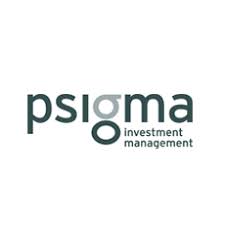
Tom Becket, Chief Investment Officer at Psigma Investment Management, says:
The last two years have been a great time to be an investor. As the global economy has continued to accelerate from the slowdown and industrial recession experienced in 2015, asset markets around the world have risen strongly. The gains generated by decent economic performance and specific corporate fundamentals have been amplified by the aggressive policies of global central banks.
Moreover, the classic contrarian opportunity to buy many riskier investments in early 2016 has been fulfilled, and those investors brave enough and patient enough to stick with their investments at a time of pain in financial markets have been rewarded.
Our expectation is that 2018 will be somewhat similar to 2017 from an economic perspective, although growth will moderate through the year back to a similar level that we have experienced since the financial crisis of 2008.
Risks undoubtedly exist, despite the bullish chants of the optimistic chorus. A return of inflation, interest rate rises and a slowdown in China are the preeminent risks we are evaluating as we head into next year.
![]()
Investors must recognise that returns in the future are unlikely to match either those healthy gains of the last few years or long run history, despite the fact that the global economy appears to be currently enjoying a moment in the sun.
We expect our portfolios to make low positive returns next year, but any gains are likely to be driven by specific and selective investment opportunities. Investors must recognise that returns in the future are unlikely to match either those healthy gains of the last few years or long run history, despite the fact that the global economy appears to be currently enjoying a moment in the sun. If we see further gains from today’s lofty levels, we might have to assume that asset markets are doing their own impression of Icarus and our ‘balanced, with a hint of caution’ investment stance could become outright ‘cautious’ for the first time since 2008.

Tom Becket
Chief Investment Officer at Psigma Investment Management
Changing contexts lie ahead
Insights from:
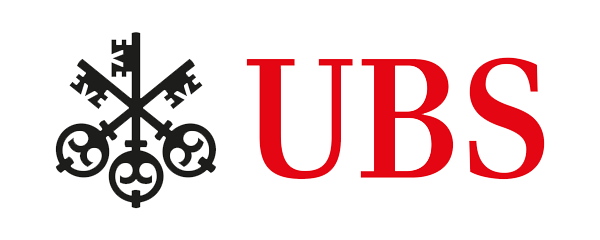
Geoffrey Yu, Head of the UK Investment Office at UBS Wealth Management, says:
Over two decades ago, Francis Fukuyama argued that the conclusion of the Cold War signalled ‘the end of history’: the victory of free-market capitalism and liberal democracy as the final state of human socio-political evolution. Safe to say 2017’s events have cast doubts on this hypothesis.
Despite good growth and rising markets, it’s evident that the sands are shifting. Looking ahead to next year, there are several key questions on investors’ minds. Are central banks set on a path to ‘normalisation’? With President Trump at the helm, are we likely to see a race to the bottom in terms of regulatory standards? Will artificial intelligence result in a fundamental overhaul of the way our societies are structured?
Though we can’t yet be sure how all these issues will play out, our view on the market is positive overall. We believe that there is little evidence of an impending recession. Solid growth and limited evidence of an impending slowdown keep us positive on global equity markets. We do not see cause for investor alarm.
![]()
As a decade of monetary easing draws to a close, investors should prepare for higher volatility and potentially higher correlations and stock dispersion.
But that does not mean the coming year will be easy for investors. There’s little doubt contexts are changing. As a decade of monetary easing draws to a close, investors should prepare for higher volatility and potentially higher correlations and stock dispersion. Political flux will raise risks to local markets, though it could also provide investors with new opportunities. New technologies will undoubtedly bring further disruption, both positive and negative.
Though recovery remains on sound footing, investors will need to adapt to all these changes to protect and growth their wealth as we move into next year.

Geoffrey Yu
Head of the UK Investment Office at UBS Wealth Management
European political risks ahead; hidden strength in the US recovery
Insights from:

Daniel Casali, Partner at Smith & Williamson, says:
In the eurozone, economic momentum is gaining traction heading into 2018. Although the fundamental picture looks broadly favourable for eurozone stocks, the political outlook is uncertain.
In Italy, the pro-European PD party came third in the recent regional Sicilian election, in what may be a dry run for a nationwide ballot that is due before May 2018.
More concerning is evidence of some polarisation of German voters following last autumn’s general election. The Grand Coalition of the CDU/CSU and SPD now controls 56% of seats in the lower house of parliament (the Bundestag), down from 80% in the previous election in 2013, and the authority of Chancellor Merkel looks to have been damaged after the poor performance of her party in the election.
The UK economic and market outlook is intertwined with eurozone political developments. The longer it takes Germany to establish a government, the less time there is for the UK-EU to finalise Brexit divorce terms, a precursor to holding trade talks. Domestically, PM Theresa May’s position looks vulnerable, and she appears to be struggling to stop Tory party infighting over Brexit. Should PM May be forced out, it could lead to a snap election and the real possibility of Jeremy Corbyn entering No. 10 Downing Street.
![]()
The US economic expansion can be likened to a plough horse. While the recovery is slow, there is hidden strength underneath.
Meanwhile, the US economic expansion can be likened to a plough horse. While the recovery is slow, there is hidden strength underneath. First, rising net household wealth (currently a record 6.6 times take-home pay) from increasing asset prices and employment gains supports consumption. Second, the corporate profit share is currently at a historically high level relative to the last 50 years. And third, after years of rebuilding capital, banks can now extend credit to borrowers. With tax reform and cuts on the horizon, the outlook for the US economy looks reasonably constructive.

Daniel Casali
Partner at Smith & Williamson
Global economy to continue firing on all cylinders
Insights from:
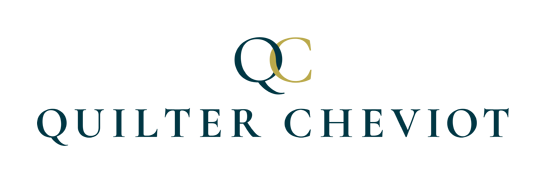
Duncan Gwyther, Chief Investment Officer at Quilter Cheviot Investment Management, says:
The global economy is firing on all cylinders, and with underlying conditions the best they have been in a decade, this looks set to continue in 2018.
Inflation remains well below target and policymakers are keen to promote growth while gradually removing stimulus measures. The geographic spread of growth is almost unprecedented and, with the possible exception of China, is less dependent on debt than in many previous cycles.
The main engines of the US, the eurozone and China – all appear on course for another strong performance next year. In the US, Q3 GDP surprised on the upside, and consumer and business confidence was robust. Job security and rising wages usually bode well for consumption and GDP growth; while US inflation is expected to reach 2% by the end of 2018.
The eurozone is experiencing synchronised growth across member states and sectors. Q3 GDP slowed marginally but overall financial conditions are very supportive. The euro area ZEW Economic Sentiment Survey is in almost unprecedented territory, with strong readings from both current and projected economic components. The recovery looks balanced and self-sustaining, even if the rate of acceleration may be peaking.
![]()
The global economy is firing on all cylinders, and with underlying conditions the best they have been in a decade, this looks set to continue in 2018.
Politics and Brexit uncertainty continue to cloud the UK economic outlook, with consumers less confident about the future. Interest rates returned to pre-EU referendum levels in November, but low nominal rates should keep the economy out of recession. The economic cycle is maturing and financial conditions are expected to tighten next year as central banks phase out quantitative easing and normalise interest rates. In our view, the business cycle has further to run and we see little sign of an over-extended bull market.
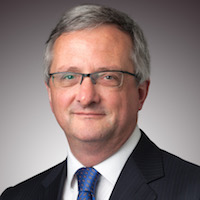
Duncan Gwyther
Chief Investment Officer at Quilter Cheviot Investment Management
A reasonable backdrop for risk assets
Insights from:
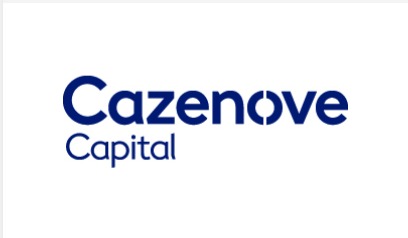
Caspar Rock, Chief Investment Officer at Cazenove Capital, says:
The two most important issues that markets have to consider for 2018 are: what is the outlook for the global economy, and, what impact will central banks have on sentiment?
Almost all leading indicators are suggesting that the synchronised global growth that we witnessed during the last year or so will continue with a continued strength in the Purchasing Managers Indices, positive impact from global trade, as well as generally accommodative monetary conditions, and the potential added benefit of the Trump tax plan in the US. From an inflation point of view, we have seen an extended period of lower-than-forecast inflation, and we are watching closely for signs of any cyclical pick-up in the rate, as you might expect given the general tightness of the labour market (despite the lack of wage growth). The rise in producer prices in recent months could presage an upturn in inflation, although a manageable one.
![]()
The two most important issues that markets have to consider for 2018 are: what is the outlook for the global economy, and, what impact will central banks have on sentiment?
This leads onto the second key issue – how will central banks respond? There have been some very clear signals from the central banks that rates will continue to rise, alongside the slow removal of the quantitative easing measures. If, however, inflation is stronger than expected, you should expect a more hawkish outlook as attempts are made to normalize interest rates more rapidly.
This should provide a reasonable backdrop for risk assets, although at the margin it would be wise to look to take some profits in areas that have performed well, after what has been a very good year for asset markets.
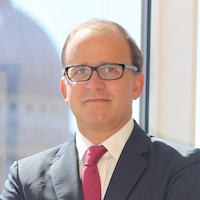
Caspar Rock
Chief Investment Officer at Cazenove Capital
Three Big Trends to Be Aware of in 2018
Insights from:
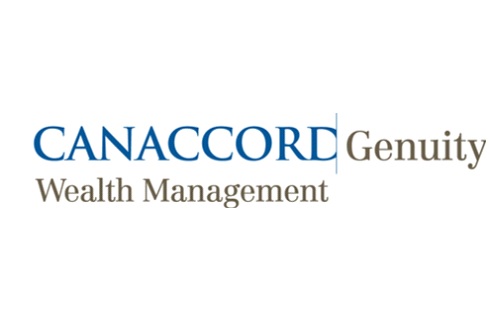
Michel Perera, Chief Investment Officer at Canaccord Genuity Wealth Management, says:
2017 hasn’t been as eventful as its predecessor. There have been a few macro-economic blips, but the bull market has continued to steam ahead. So, what big investment trends are we likely to see in 2018?
Artificial Intelligence (AI) and robotics: It’s the investment bandwagon du jour, but AI and robotics opportunities have to be well vetted. There are various ways to access the AI theme – three active funds have launched in the last year and there are various ETFs, including the London-listed Robo Global Robotics and Automation GO UCITS ETF. The forecast for industry growth is phenomenal, but we would suggest treading carefully.
Techie tiger, digital dragon: When you thought of emerging markets, your mind traditionally turned to commodities. But these days, 30% of EM equity indices are technology. China’s tech stocks like Alibaba, Tencent and Baidu are more than a match for their US equivalents, and the US is being challenged for its Silicon Valley crown. And India isn’t far behind either.
![]()
Will the ride in 2018 be as smooth as in 2017? It remains to be seen. But investors need to keep their minds sharp and their wits about them.
The ‘Red Menace’: After the Tories’ dismal performance in the June elections and Corbyn’s ability to win the support of the youth vote, having Jeremy in number 10 is not beyond the realms. If Labour gets in, what is the outlook for the markets? With promises of nationalisation and infrastructure spending, a run on the pound is likely; shares in banks, utilities, housebuilders and transport would drop and London house prices would come under pressure.
Will the ride in 2018 be as smooth as in 2017? It remains to be seen. But investors need to keep their minds sharp and their wits about them – the hunt for returns will continue apace in the New Year.
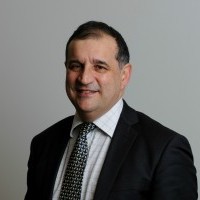
Michel Perera
Chief Investment Officer at Canaccord Genuity Wealth Management
Alternatives demystified
Insights from:
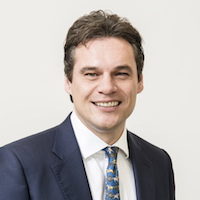
Christian Armbruester, Chief Executive of Blu Family Office, says:
It’s amazing how wide the definition really is of what constitutes an alternative. Some people consider hedge funds or private equity funds as part of this asset class, others think commodities or real estate are part of the mix, while some consider only real assets, like fine art or wine as true alternatives. Of course, outside of the definition of the traditional asset classes, e.g. exchange-traded equites and bonds, anything else can be classified as more complicated, more expensive and surely perceived to be higher risk.
But is it fair to lump a painting together with a hedge fund or a private lending investment? Or worse, apply one category of risk to such a wide array of possible investments? And, as a consequence, should the investor really only allocate a small percentage of their portfolio to this asset class, as so many asset managers recommend?
![]()
The fact is, that with bond yields as low as they are and equities unlikely to go up forever, the risk of not investing in alternatives for diversification is far greater than haggling over definitions.
To us, the world of alternatives is so large and the risks are so different from one strategy to the next, that we apply much narrower definitions to the underlying components. Very importantly, we distinguish the risks of the underlying investments and, given such a wide array on offer, we also allocate a much higher percentage of our assets to alternatives.
The fact is, that with bond yields as low as they are and equities unlikely to go up forever, the risk of not investing in alternatives for diversification is far greater than haggling over definitions. Therefore, as the year draws to a close, we recommend that investors lose the fear, take a closer look and discover the wonders of a huge universe of possible investments. The benefits of true diversification in this market environment are simply too compelling to ignore as we look towards 2018.

Christian Armbruester
Chief Executive of Blu Family Office
Important information
The investment strategy explanations contained in this piece are for informational purposes only, represent the views of individual institutions, and are not intended in any way as financial or investment advice. Any comment on specific securities should not be interpreted as investment research or advice, solicitation or recommendations to buy or sell a particular security.
We always advise consultation with a professional before making any investment decisions.
Always remember that investing involves risk and the value of investments may fall as well as rise. Past performance should not be seen as a guarantee of future returns.
